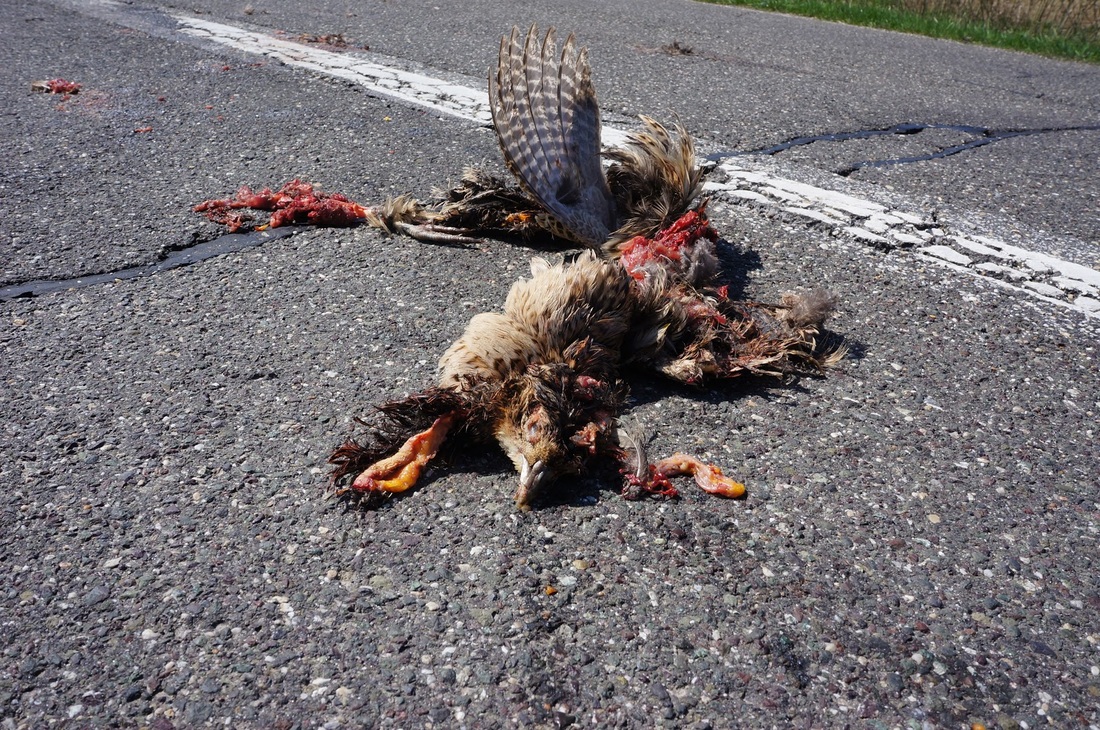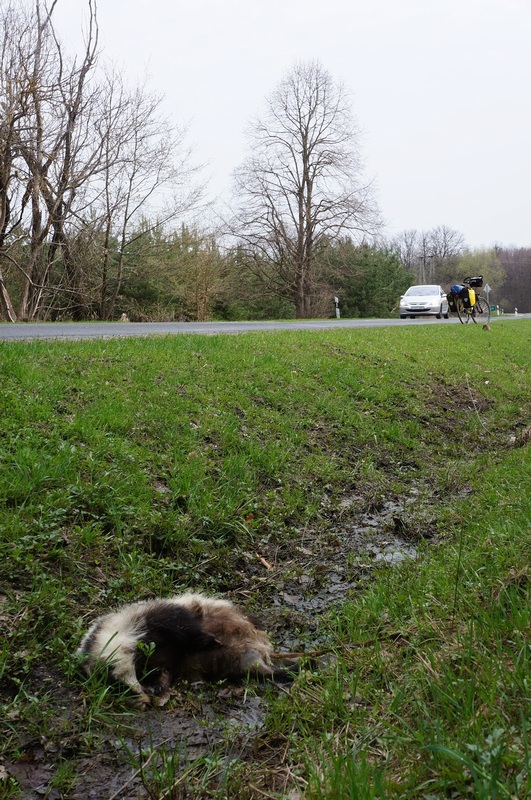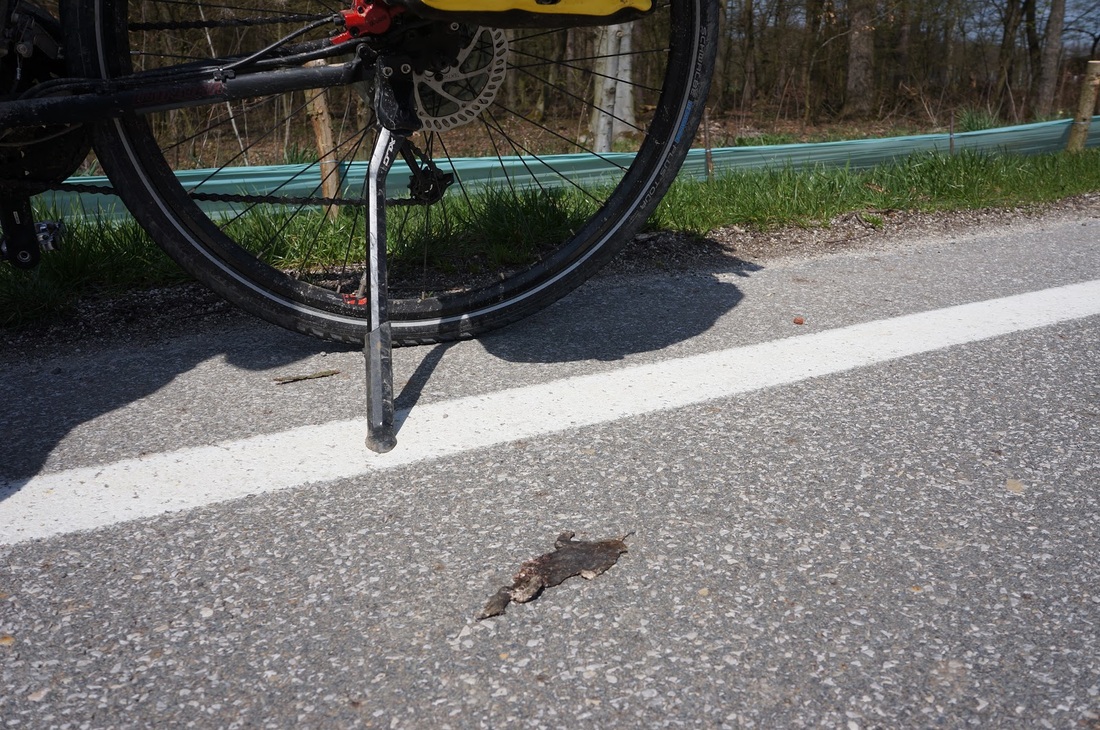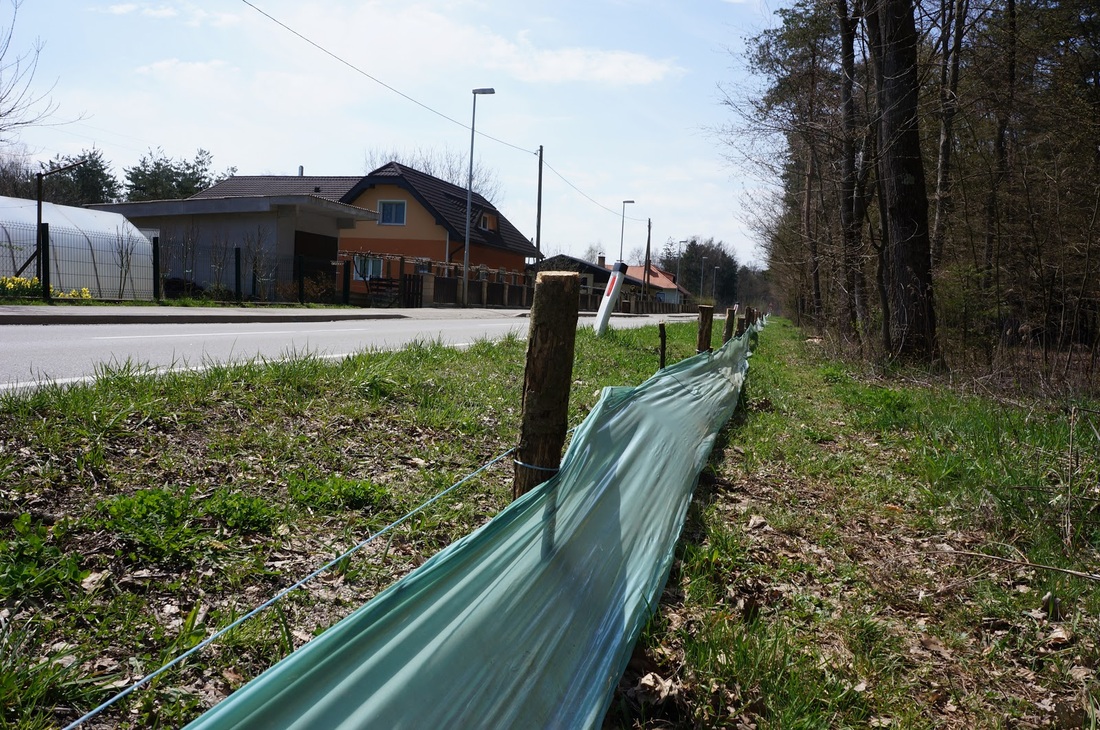Karen and Markus Head Out for the Second leg of Their Journey in Search of Roadkill

Bird of Prey on a road between farm fields in Slovenia. Photo Credit 2enroute.com
Karen and Markus are world travellers and avid adventurers. For the second leg of their trip, they are bicycling through Europe and recording roadkill observations for theASC Roadkill Survey for Road Bikers. For more on their trip, visit their website https://2enroute.blogspot.com/.
There are many reasons the average person might stop and stare at Markus and I as we go about daily life on this trip. It might be because we are pushing fully loaded bikes up flights of stairs in a crowded train station. It could be the impossible-to-ignore fluorescent orange biking vests. Or it might be because we are standing in the middle of a road photographing squashed toads.

Badger on the roadside by a National Park in Hungary. Photo Credit 2enroute.com
Yes, you read that right! We’ve partnered with
Adventurers and Scientists for Conservation again for the European leg of our journey, this time with the goal of documenting roadkill observations for the
University of California Davis Road Ecology Center.
It can be easy to forget, especially when speeding along at 100 km/hour in a car, that we share all the places we inhabit with other animals who have places to go and things to do too. Just as we humans move throughout our “home ranges” to carry out daily tasks, seasonal activities, or major events and milestones in our lives, other animals do the same. But how often do we imagine the landscapes we travel as multi-species landscapes? Animals use the same roads we do, sometimes just to cross them, sometimes as travel routes or foraging areas. And remembering this when we design roads can make a huge difference to some wildlife populations, whether by reducing vehicle collision deaths or by enabling fragmented subpopulations to stay connected.

Squashed Toad with amphibian fence in background. Photo Credit 2enroute.com
Bicycling thousands of kilometers through Europe in spring means passing through different wildlife habitats and patterns of land use nearly every day. Thanks to our re-route to begin our trip in Croatia while central Europe was still covered in snow, we have found ourselves surrounded by budding trees and blooming flowers all the way as we chase the leading edge of springtime to the north. The great benefit of covering so much territory is that we witness so many patterns. Though our roadkill observations have been much less frequent than we expected (perhaps because central Europe has less wildlife in general than other places such as California where other roadkill studies have been done), the patterns we see make sense. We see dead songbirds near forests, dead rats and birds of prey near farm fields, and dead frogs and toads near wetlands.

An amphibian fence in need of repair. Photo Credit 2enroute.com
Our most striking observations yet have been the mass mortalities of toads in some places. We had seen only a couple roadkills so far when, one week into our trip, we biked through the village of Sava, Slovenia and passed approximately 30 squashed toads in the space of 200 meters. Over the next several days, when we passed small wetlands, we saw more and we probably missed a lot since it turns out the leathery, dark bodies of flattened toads look an awful lot like clumps of dirt or bits of tire rubber when you fly by them at 20 km/hour. Markus told me that many local conservation organizations in Europe put up frog fences along roadsides where crossings are common to reduce frog and toad deaths. In one Austrian village where we stopped to photograph a couple toads on the road, we noticed one such fence nearby that was in need of repair. It’s things like these fences, or wildlife crossing bridges, that can make a difference for wildlife populations




